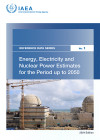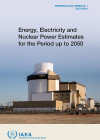Projecting a society’s long-term electricity demand helps determine what capacity is needed for future energy generation. Such projections are also used to analyse the scope and composition of an electricity supply expansion project involving nuclear power.
Energy projections
When embarking on a new nuclear power project, it is essential to forecast long-term electricity demand and supply as part of the overall energy planning effort. Projecting electrical system demand is a complex task involving many system variables that utility planners should take into consideration when making capacity expansion decisions.
To deal with uncertainties, a comprehensive forecasting effort is required that should involve a range of future energy demand projections. The analysis should be conducted with relevant and consistent macroeconomic and microeconomic data, so that electricity demand projections can be more reliable and consistent with demographic, economic and industrial development projections.
Similar to electricity demand analysis, electricity supply analysis is necessary to determine the feasibility of an energy project. This forecast should be based on historical data, including reviews of past trends and the present electricity supply, studies of the electricity generation, transmission and distribution systems, of the available resources for electricity generation and of existing and planned interconnections to neighbouring systems.
To provide assistance to its Member States in this field, the IAEA has developed an end-use Model for Analysis of Energy Demand. This model provides a flexible framework for exploring the influence of social, economic, technological and policy changes in the long-term evolution of energy and electricity demand.
The IAEA also assists Member States to develop specific scenario models of national, regional and global nuclear energy system development using the MESSAGE-NES software.








